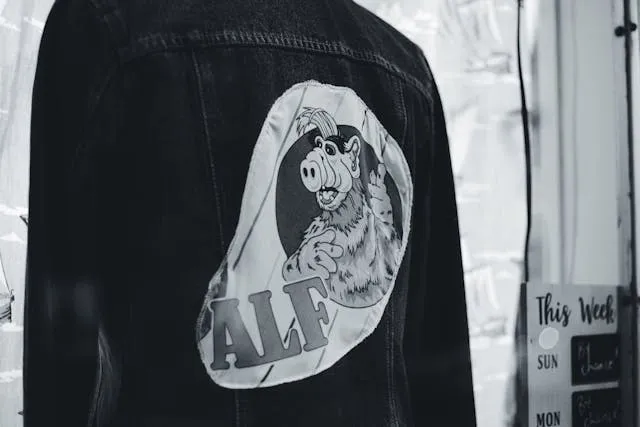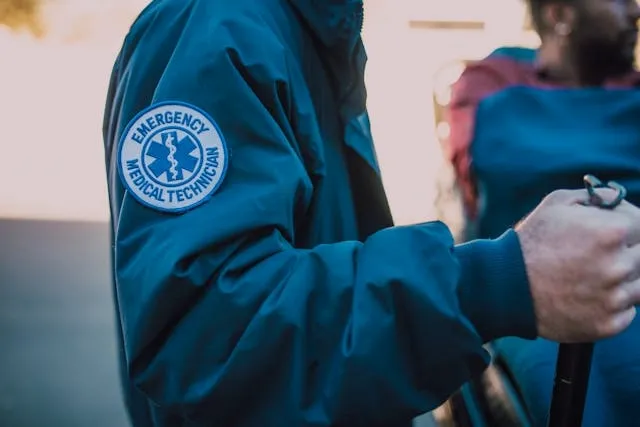How To Put A Patch On A Jacket: Application Methods And Mistakes To Avoid
Adding a patch to a jacket can be a great way to show your personal style or commemorate significant experiences or achievements. Whether your patch is decorative or functional, the application method you choose makes a big difference to its appearance and durability.
In this guide, we explain best practices for adding patches to your jacket. Avoid common mistakes like applying insufficient heat or adhesive and learn specific techniques to achieve a secure fit.

Key Takeaways
- Consider the material and intended purpose of your jacket when selecting the ideal attachment method for your patches.
- It is important to opt for high-quality patches that offer a polished look and lasting attachment.
- Don’t take shortcuts during application. Improperly set adhesives risk the patch falling off, so do every step thoroughly.
- We supply high-quality custom patches for jackets that offer design flexibility and reliable attachment for any application.
Table of contents
-
How To Put A Patch On A Jacket
-
Best Ways To Attach Patches To A Jacket
-
How Do You Sew A Patch Onto A Lined Jacket?
-
How To Iron On Patches To Jackets
-
Can You Use Glue To Attach A Patch To A Jacket?
-
Why Do Patches Fall Off From Jackets?
-
Where Should You Place Patches On A Jacket?
-
Best Way To Add Patches To Waterproof Jackets
-
Is It Better To Sew Or Stick On Patches?
How To Put A Patch On A Jacket
When you are putting a patch on a jacket, the first step is to choose the appropriate attachment method. Choose between sewing, ironing, or using fabric adhesive based on the jacket’s material.
Let’s look at some good solutions for different priorities:
- Precision and durability: Hand or machine sewing works best, and is suitable for denim or lined jackets.
- Protecting more delicate fabrics: If you have a synthetic or lighter fabric, opt for an iron-on or fabric glue application.
Before you start your application, clean the area to ensure a strong adhesion. Position the patch where you intend to attach it and secure it temporarily using pins or tape. You could then test this placement by trying the jacket on and seeing how it looks.
If you are sewing, stitch around the edges with a matching or invisible thread. If you are ironing, use a medium heat setting and apply a protective cloth on top. For adhesive, make sure you spread a thin, even layer and press firmly before allowing ample drying time.
Work with us to create custom bomber jacket patches and patches for other jacket types that can be attached in various ways.

Best Ways To Attach Patches To A Jacket
The three primary methods for applying patches are sewing, using iron-on patches, or applying fabric adhesive. There are pros and cons to each of these, so let's take a more detailed look at them:
- Sewing: This offers maximum durability and works well for long term applications on denim, cotton, or heavy-duty materials. But it does take some time and skill to learn how to sew a patch onto a jacket.
- Iron-on: This is great for a fast application. It works best on fabrics that tolerate heat well like polyester, cotton, and denim, but may not be appropriate for heat-sensitive fabrics like nylon.
- Adhesives: Fabric glue and hot glue are good for delicate materials or when sewing simply isn’t possible. However, they may lack long-term hold on heavily washed or stretchy fabrics.
If you need temporary or interchangeable patches for your jackets, consider options like Velcro, safety pin, peel-and-stick, or magnetic attachments. These are all excellent choices that deliver flexibility for your patch attachments.
How To Add Patches To Jackets Without Sewing?
If you are looking for an alternative to sewing patches onto jackets, you have several options available to you. Some jacket materials are best suited to sewing, so check whether your jacket is safe for solutions like iron-on patches or fabric adhesive.
Let’s look at the two most common alternatives:
- Fabric glue: This can work on most materials. Clean and prepare the jacket, then spread glue evenly across the patch backing and press it firmly onto the jacket before allowing it to set for the recommended drying time.
- Iron-on patches: These have heat-activated adhesive on the rear, so you will need to cover the patch with a cloth and apply a medium iron temperature with pressure.
We recommend that you avoid hot glue unless your jacket is unlikely to be washed frequently. Another alternative to have customized outerwear is to order a customized full-zip hoodie that includes your personalized design embroidered onto the fabric.

Want to make a statement with your team's apparel?
Enhance your uniforms with our custom patches!
Order now and create unique uniforms with our high-quality, personalized patches.
How Do You Sew A Patch Onto A Lined Jacket?
As we have mentioned, sewing a patch onto a jacket is a great way to get an aesthetically-pleasing, durable attachment for your apparel. Experts have discussed how the concept of “coolness” has existed since the times of Japanese Samurai or even the Stoics of Ancient Greece, but a patched jacket is certainly a modern interpretation of it.
If you want to sew a patch onto a lined jacket, you will need to take a few special precautions:
- Prevent stitching from catching or distorting the lining by separating the layers with a piece of cardboard or fabric stabilizer.
- Pin the patch securely to avoid shifting.
- Use a needle that is compatible with your fabric, like a heavy-duty needle for leather.
- A waxed or polyester thread will ensure long-term durability.
- Sew slowly, making even stitches around the edge of the patch.
If you are sewing with a machine, choose a zigzag stitch for maximum reinforcement.
How Do You Hand Sew Or Machine Sew A Patch?
In the present day, jacket fashion is a melting pot of diverse influences and styles. Adding patches is a popular choice to personalize jackets and give them a more unique look. Sewing provides a durable attachment that looks great on a range of jacket types, but there are different approaches for hand sewing and machine sewing.
- Hand sewing: This offers more precise control, particularly if you are working with irregular patches of carved surfaces. You will need a sturdy needle and double-thread for security. Anchor the thread with a knot and use a whip stitch or backstitch for neatness.
- Machine sewing: Adjust your stitch length to accommodate the patch thickness. Consider wooly nylon thread for its strength and resilience.
Machine sewing is the faster option but you will need to know how to use a sewing machine properly. And it may not offer as much precision as hand-sewing for intricate attachments.
How To Iron On Patches To Jackets
Iron-on patches are a convenient way to personalize your jackets, adding a durable embellishment when done correctly. You can put patches on bomber jackets, denim jackets, and more this way, but you need to consider important steps like preheating the iron, cleaning the jacket’s surface, and pressing firmly over the patch.
Here’s a brief step-by-step to ironing patches onto jackets:
- Preheat the iron to a medium heat without steam.
- Clean the jacket’s surface thoroughly.
- Position the patch and pin it in place for security.
- Cover with a thin cloth to protect against direct heat exposure.
- Press the iron firmly over the cloth and patch for 15-20 seconds.
- Allow it to cool, then check if the edges are securely adhered. Repeat if necessary.
Iron-on patches are a popular choice for their ease of use, so follow this guidance to get a strong adhesion.
Stand out from the crowd with our unique designs
Customize your style with our patches!
Order now and make a statement
make your custom patchesCan You Use Glue To Attach A Patch To A Jacket?
Glue is another popular method of attaching patches to jackets, and it can be particularly useful for fabrics that aren’t suitable for heat exposure like nylon or leather. You need to consider the types of glue available, like fabric glue and hot glue, and the correct methods to use them.
Here are some considerations:
- Fabric glue: This is reliable for most fabrics, offering a flexible bond. Use it to put patches on a leather jacket or with cotton or polyester outerwear.
- Hot glue: This is quick to use but less durable when frequent washing or stretching are involved.
- Gorilla Glue: This is effective on synthetic materials but it may harden and feel stiff once dried.
Fabric glue is the most popular choice as it provides the best balance of flexibility and adhesion for permanent solutions. You have many brands and variants to choose from, so consider your options carefully.
Why Do Patches Fall Off From Jackets?
Common reasons why patches detach vary, but it is important to be aware of issues like insufficient adhesive or uneven heat distribution during application.
Let’s explore the common reasons patches fall off jackets in a little detail:
- Insufficient adhesive: If you don’t apply enough glue, you will get a weak attachment that won’t stand up to frequent wear or washing.
- Uneven heat distribution: For iron-on applications, uneven heat distribution means some areas of the patch don’t secure as well as others.
- Wrong attachment method: Different fabrics work better with different attachment methods, and using the wrong one can lead to a weak attachment.
Always ensure surfaces are clean, adhesives are fully activated, and proper pressure is applied during bonding. Reinforce edges with a few stitches if necessary. Whatever attachment method you choose, our high-quality custom patches for jackets allow you to create unique designs and enjoy durable attachments to jackets and other apparel.
Add a personal touch with our custom patches
Express yourself with our wide range of designs
Order now and make it yours.
Where Should You Place Patches On A Jacket?
There are various popular patch placements for patches on jackets, including the sleeves, back, and chest. In some contexts, like motorcycle clubs or sports teams, there are specific rules and etiquette about where certain patch types should go.
Let’s look at some popular choices for a casual jacket:
- The chest: This is a good way to make a bold statement, displaying patches prominently.
- Sleeves: This offers a minimalist touch to display smaller patches and add eye-catching accents to your jacket.
- Back: Here you can attach larger, dramatic patches for a stylish look.
Creative approaches include layering small patches along the front or pairing them symmetrically on the shoulders. Some people chose to cluster them on the hemline. Another key consideration is what to wear with a jacket to get the right look, so make sure your patch placement serves a purpose in your overall ensemble.
Best Way To Add Patches To Waterproof Jackets
- Discuss methods for maintaining waterproof integrity, such as sewing with waterproof thread.
- Mention the challenges of adhesive methods on Gore-Tex and similar materials.
Waterproof jackets are functional outerwear used to protect against rain and other water. But that doesn’t mean they can’t be stylish as well. Maintaining waterproof integrity while adding patches takes special considerations to get it right.
You will need to sew with waterproof thread and you may want to seal holes with seam tape to preserve the integrity of your jacket. Adhesives don’t often work well with Gore-Tex and other similar materials as they risk disrupting the water-resistant coating. Instead, opt for sew-on methods or Velcro patches to preserve waterproof features without compromising the functionality.
If you accessorize your jacket with patches, consider getting other apparel that matches. Explore custom bucket hats that align with your jacket and patch designs for a cohesive look.

Make a statement with our unique designs
Stand out with our custom patches!
Order now and show off your style
make your custom patchesIs It Better To Sew Or Stick On Patches?
Generally speaking, sewing offers the best possible durability when it comes to adding patches to jackets, and it is suitable for virtually every fabric type. But it can be a little time consuming and it requires a degree of sewing skill to do a good job.
Adhesive options like fabric glue and iron-on patches are generally considered a more convenient option. However, they don’t offer such a durable adhesion, so they may not be suitable for all jacket applications. If you wash your jacket frequently, or it is made from a heavily textured material, sewing is recommended. Adhesives are better suited to quick projects, and may be suitable for delicate fabrics, but they might need reinforcement over time.
Our custom patches for jackets are available with a wide range of attachment methods. We offer diverse customization options and try to make it possible to create the ideal solution for your needs, so work with us to create the right patches for any application.
Frequently Asked Questions About How To Put A Patch On A Jacket
How To Put A Patch On A Jacket At Home?
If you are putting a patch on a jacket at home, you must prepare the area, select the best attachment method, and follow the appropriate steps for your chosen attachment technique.
Why Does My Patch Keep Falling Off?
Patches can fail to adhere well due to improper surface cleaning, inadequate adhesive activation, or uneven pressure during ironing. Poor-quality patches may also fail, so opt for reliable materials.